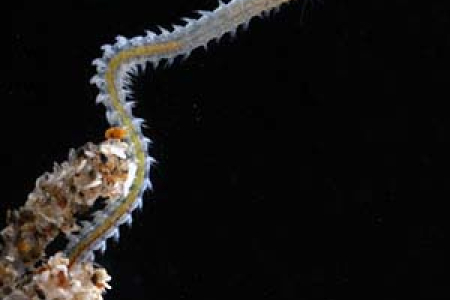Student uncovers new species on Darwin beaches
A Charles Darwin University PhD candidate has stumbled on new microscopic species living beneath some of Darwin’s most popular beaches.
Amanda Lilleyman is currently researching shorebirds that live in the intertidal zone, but when she decided to delve underground to find out what they were eating, she did not expect to find some invertebrate species that were previously unknown to science.
“As part of my PhD on how migratory shorebird use their habitat I have been collecting samples of sediment from beaches around Darwin to learn about how much invertebrate food is available in the sediment,” Amanda said. “Coastal migratory shorebirds feed on invertebrates in the exposed wet sand as the tide falls.”
After collecting the samples, Amanda worked with polychaete expert Dr Chris Glasby and mollusc expert Dr Richard Willan, from the Museum and Art Gallery of the Northern Territory (MAGNT), to sort and identify the microscopic organisms.
“So far I have counted 1436 individual invertebrates from 90+ species,” she said. “Some species are common in this habitat type and about a third of the total species are polychaetes – marine segmented worms.”
Amanda said the polychaetes were an important food source for shorebirds.
“These worms have been identified by polychaete expert Dr Chris Glasby from MAGNT,” she said. “So far we have found 15 that are new to science.”
She said the most abundant invertebrate found in her samples was a small bivalve, a type of pipi called Paphies sp., which was important prey for her main study species, the Great Knot (Calidris tenuirostris).
“This pipi is the perfect size for the Great Knot, which feeds on them as the tide drops and when the pipis have their siphons exposed,” she said. “The birds can sense the movement of the pipis and work the tide edge until they are satisfied or cannot easily access more of the food.”
Amanda said that some of her samples would be added to invertebrate collections at MAGNT to help inform the diversity and the importance of invertebrate species in the intertidal zone.
Amanda’s PhD is entitled “Constraints on population size of migratory shorebirds in Darwin Harbour, Northern Territory”.
